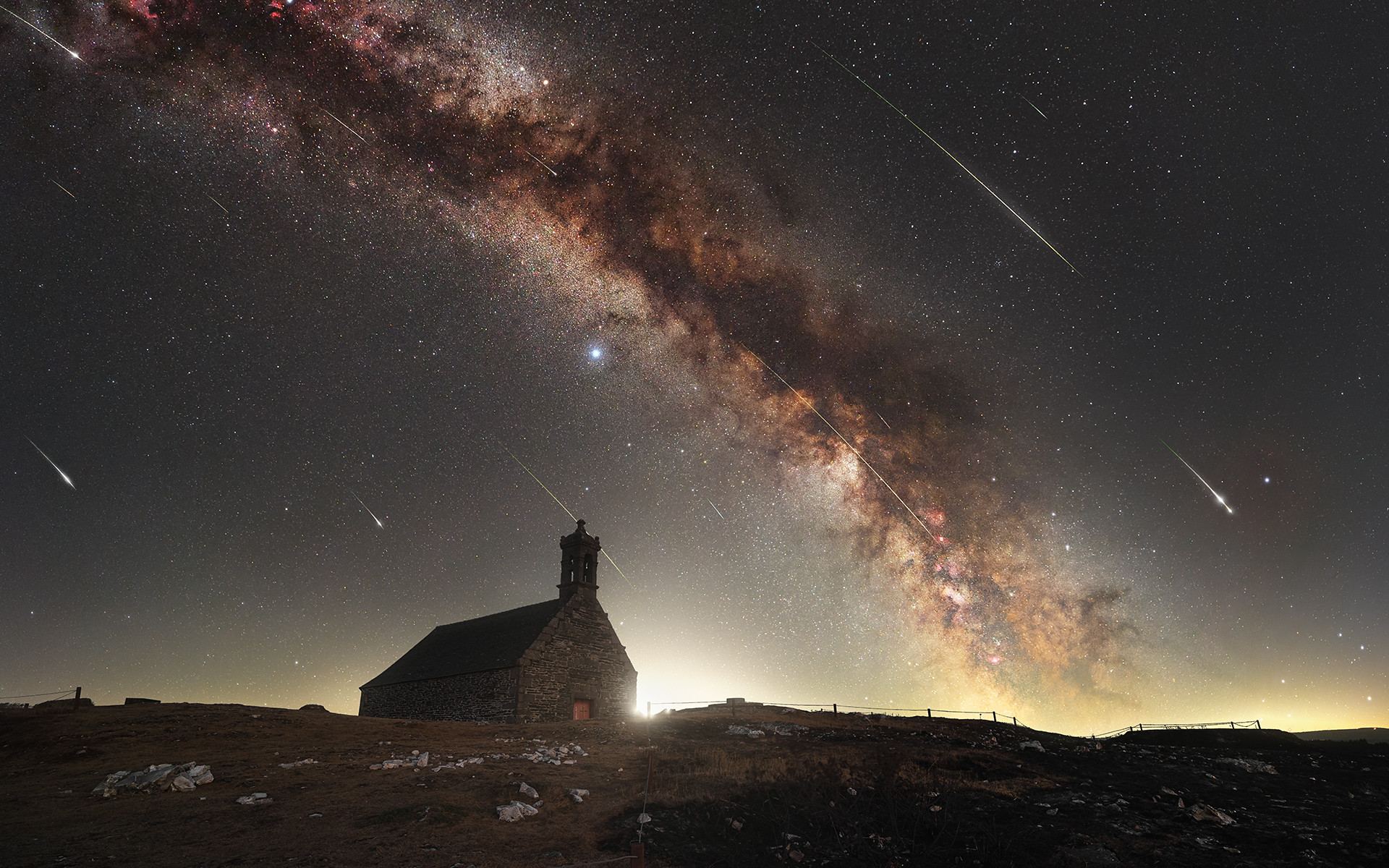Don’t miss one of the best meteor displays of 2023, as the Perseids peak this coming weekend.
Grab a lawn chair, bring a friend, a red light and lots of bug spray: the August Perseids are active this week going into the weekend. You won’t want to miss ‘em if skies are clear, as 2023 is a banner year for the Perseids, one of the sure-fire performers when it comes to meteor showers.
First, the good news: 2023 is an optimal year for the Perseids, primarily because the light-polluting Moon is safely out of the way. In August, the Moon reaches New on the 16th, just 3 days after the expected peak of the Perseids.

Peak Times to Watch
The Perseid meteors are broadly active from July 17th to August 24th, though the key peak is expected to occur on Sunday, August 13th around 7:00 UT. This favors eastern Europe and central Asia at dawn. Western Europe and North America should see increased activity on the mornings of Saturday the 12th and Sunday the 13th. Keep in mind, if skies are cloudy, it’s still worth watching a morning or two before or after.

The Perseids are grain-sized bits of cometary dust laid down by Comet 109P Swift-Tuttle on its 133-year orbit around the Sun. The comet is currently headed towards aphelion and won’t reach perihelion again until 2126. Most years see the shower producing 60 to 100 meteors per hour as seen from dark skies. The radiant in the constellation Perseus the Hero rises low to the northeast for mid-northern latitudes around 2 AM local. Start watching early as you may see a few early arrivals glancing off the Earth’s atmosphere in the evening as well.
The Perseids were first identified as a modern annual shower in the mid-19th century, though the observed uptick in August meteor rates goes back much further. Astronomer Edward Herrick noted in his 1839 work submitted to The American Journal of Science and Arts that Christians had (and still refer to) the Perseids as the “Tears of Saint Lawrence,” in reference to the martyrdom of Saint Lawrence (San Lorenzo) in early August 258 AD.
In recent years, the Perseids have been steady performers at a rate of 60 to 100 per hour. Though they’ve had their reign as the ‘King of Annual Meteor showers’ challenged a bit in recent years by the December Geminids, the Perseids have the key advantage of occurring in the summer, during camping season.

Observing the Perseids
You’ll want to watch from a site that’s as dark as possible. Rates for meteor showers always pick up after local midnight, as you turn forward into the oncoming meteor stream. Even a small amount of light pollution can significantly impact the number of meteors you’ll see. Any meteor you can trace back to Perseus is a Perseid, though a few random sporadics may make an appearance. Also, watch for the planets Jupiter and Saturn nearby. The ringed world is headed towards opposition later this month. On the morning of the 13th, the 9.5% illuminated crescent Moon rises around 2:00 AM local… perhaps, it’s also worth watching for Perseid impacts on the night side of the Moon as well?
Imaging the Perseids is as simple as setting a DSLR camera on a tripod with a lens affording a wide field of view. Simply shoot a series of long-exposures, and see what turns up. Be sure to take some test shots beforehand to get the ISO/f-stop/shutter speed combination just right for the current sky conditions. I like to use a remote intervalometer controller to automate the process. This lets you simply shoot long series of shots, while you lie back and enjoy the show.

If you’re looking to do real science, you can report what you see to the International Meteor Observers network. Also, keep an eye (and ear) out for stranger phenomena, including crackling audible meteors, and persistent smoke trails lingering after bolide fireballs. I like to keep a pair of binoculars handy, to examine these wispy vapor tracks across the sky. You can even tune a standard FM radio to an unused station and ‘hear’ radio pings from meteors as they ionize the upper atmosphere.
Clouded out, or reside in the wrong hemisphere? You can also catch the 2023 Perseids live online courtesy of astronomer Gianluca Masi and the Virtual Telescope Project.
Don’t miss the 2023 Perseids; the next optimal year isn’t until 2026.

